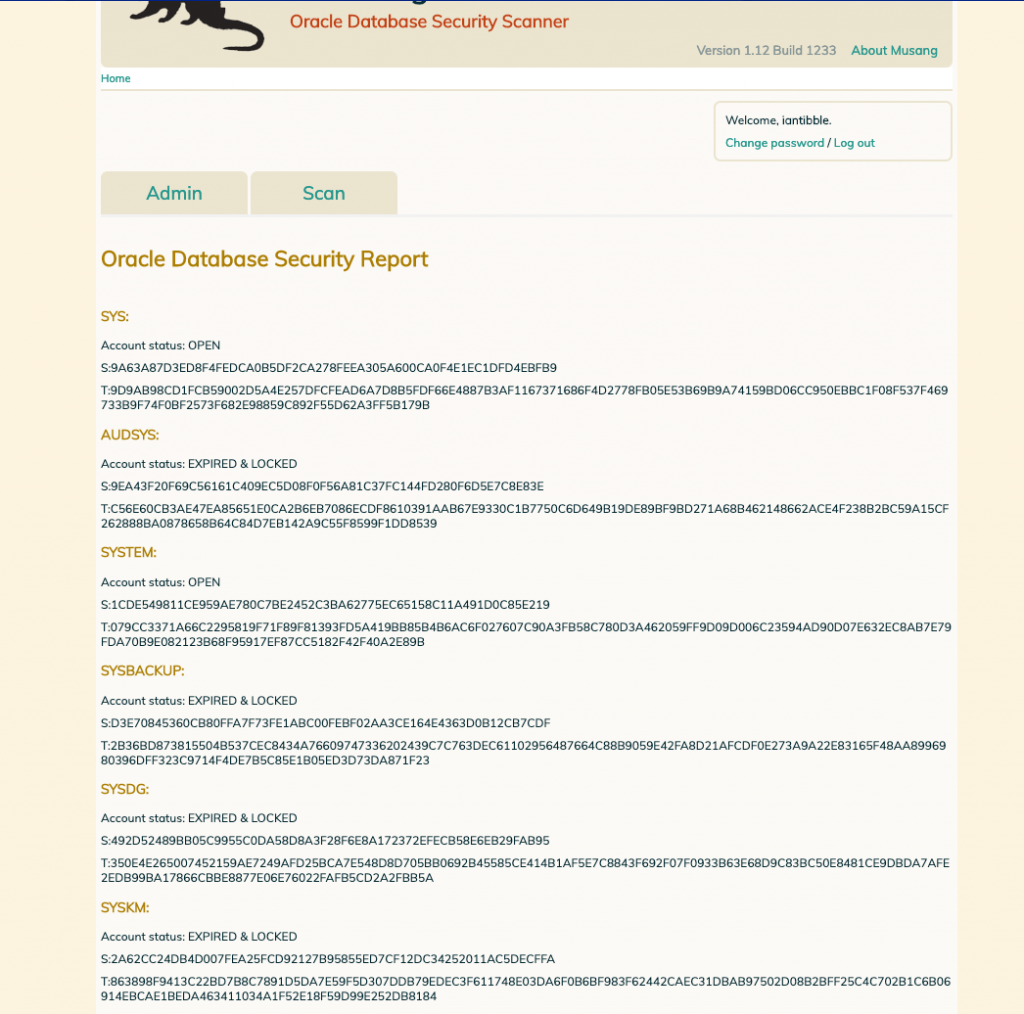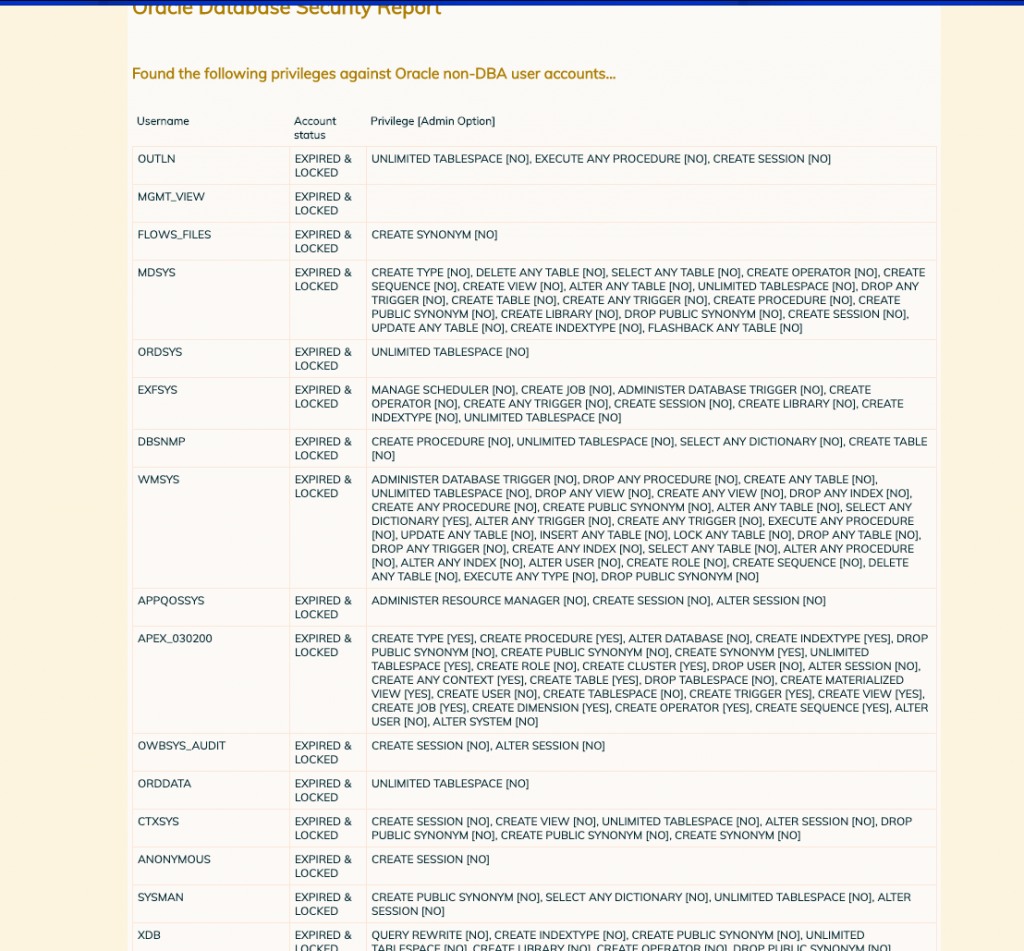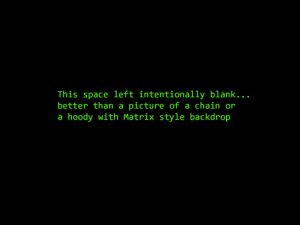We are told there is a skills gap in information security. I agree – there is, but recent suggestions to address the gap take us to dangerous places that are great for recruitment agencies, but not so great for the business world.
I want to steer away from use of the phrase ‘skills’ in this article because its too micro and the phrase has been violated by modern hiring practices. We are not looking for ‘Websense’, ‘DLP’ skills or as i saw recently ‘HSM’ skills. These requirements are silly unless it is the plan for organisations to spend 10 to 50 times more than they need on human resource, and have a security team of 300. Its healthier for organisations to look at ‘habits’ or ‘backgrounds’, and along those lines, in information security we’re looking for the following:
- At least 5 years in an IT discipline: sys admin, DBA, devops bod, programmer for example
- Evidence of having excelled in those positions and sort of grown out of them
- Flexibility: for example, the crusty Radagast BSD-derivative disciple who has no fundamentalist views of other operating systems (think ‘Windows’) and not only can happily work with something like Active Directory, but they actually love working with Active Directory
- A good-to-have-but-not-critical is past evidence of breaking or making things, but this should seen as a nice bonus. In its own right, it is insufficient – recruiting from hacker confz is far from guaranteed to work – too much to cover here
So really it should be seen that a career in infosec is a sort of ‘graduation’ on from other IT vocations. There should be an entrance exam based on core technologies and penetration testing. The career progression path goes something like: Analyst (5 years) –> Consultant -> Architect/Manager. Managers and architects cannot be effective if they do not have a solid IT background. An architect who doesn’t know her way around a Cisco router, implement a new SIEM correlation rule, or who cannot run or interpret the output from a packet sniffer is not an architect.
Analysts and Consultants should be skilled with the core building blocks to the level of being confidently handed administrative access to production systems. As it is, security pros find it hard to even get read-only access to firewall management suites. And having fast access to information on firewall rules – it can be critical.
Some may believe that individuals fitting the above profile are hard to find, and they’d be right. However, with the aforementioned model, the workforce will change from lots of people with micro-skills or product-based pseudo skills, to fewer people who are just fast learners and whose core areas complement each other. If you consider that a team of 300 could be reduced to 6 – the game has changed beyond recognition.
Quoting a recent article: “The most in demand cyber security certifications were Security+, Ethical Hacking, Network+, CISSP, and A+. The most in demand skills were Ethical Hacking, Computer Forensics, CISSP, Malware Analysis, and Advanced Penetration Testing”. There are more problems with this to describe in a reasonable time frame but none of these should ever be called ‘skills’. Of these, Penetration Testing (leave out the ‘ethics’ qualifier because it adds a distasteful layer of judgment on top of the law) is the only one that should be called a specification in its own right.
And yes, Governance, Risk and Control (GRC) is an area that needs addressing, but this must be the role of the Information Security Manager. There is a connection between Information Security Manage-ment and Information Security Manage-er. Some organisations have separate GRC functions, the UK public sector usually has dedicated “assurance” functions, and as i’ve seen with some law firms, they are separated from the rest of security and IT. Decision making on risk acceptance or mitigation, and areas such as Information Classification, MUST have an IT input and this is the role of the Information Security Manager. There must be one holistic security team consisting of a few individuals and one Information Security Manager.
In security we should not be leaving the impression that one can leave higher education, take a course in forensics, get accreditation, and then go and get a job in forensics. This is not bridging the security skills gap – its adding security costs with scant return. If you know something about forensics (usually this will be seen as ‘Encase‘ by the uninitiated) but don’t even have the IT background, let alone the security background, you will not know where to look in an investigation, or have a picture of risk. You will not have an inkling of how systems are compromised or the macro-techniques used by malware authors. So you may know how to use Encase and take an integral disk image for example, but that will be the limit of your contribution. Doesn’t sound like a particularly rewarding way to spend 200 business days per year? You’d be right.
Sticking with the forensics theme: an Analyst with the right mindset can contribute effectively in an incident investigation from day one. There are some brief aspects of incident response for them to consider, but it is not advisable to view forensics/incident response as a deep area. We can call it a specification, just as an involuntary action such as breathing is a specification, but if we do, we are saying that it takes more than one person to change a light bulb.
Incident response from the organisational / Incident Response Plan (IRP) formation point of view is a one-day training course or a few hours of reading. The tech aspects are 99% not distinct from the core areas of IT and network security. This is not a specialisation.
Other areas such as DLP, Threat Intelligence, SIEM, Cryptography and Key Management – these can be easily adopted by the right security minds. And with regard security products – it should be seen that security professionals are picking up new tools on-the-fly and don’t need 2 week training courses that cost $4000. Some of the tools in the VM and proxy space are GUIs for older open source efforts such as Nessus, OpenVAS, and Squid with which they will be well-versed, and if they’re not, it will take an hour to pick up the essentials.
There’s been a lot of talk of Operating Systems (OS) thus far. Operating Systems are not ‘a thing from 1998’. Take an old idea that has been labelled ‘modern’ as an example: ok, lets go with ‘Cloud’. Clouds have operating systems. VMs deployed to clouds have operating systems. When we deploy a critical service to a cloud, we cannot ignore the OS even if its a PaaS deployment. So in security we need people who can view an OS in the same way that a hacker views an OS – we need to think about Kill Chains and local privilege elevations. The Threat and Vulnerability Management (TVM) challenge does not disappear just because you have PaaS’d everything. Moreover if you have PaaS’d everything, you have immediately lost the TVM battle. As Beaker famously said in his cloud presentation – “Platforms Bitches”. Popular OS like Windows, *nix, Linux, and popular applications such as Oracle Database are going to be around for some time yet and its the OS where the front-lines are drawn.
Also what is a common misconception and does not work: a secops/network engineer going straight into security with no evidence of interest in other areas. ‘Secops’ is not good preparation for a security career, mainly because secops is sort of purgatory. Just as “there is no Dana, only Zool“, so “there is no secops, only ops”. There is only a security element to these roles because the role covers operational processes with security products. That is anti-security.
All Analyst roles should have an element of penetration testing and appsec, and when I say penetration testing, i do mean unrestricted testing as in an actual simulation. That means no restrictions on exploit usage or source address – because attackers do not have such restrictions. Why spend on this type of testing if its not an actual simulation?
Usage of Cisco Discovery Protocol (CDP) offers a good example of how a lack of penetration testing experience can impede a security team. If security is being done even marginally professionally in an organisation, there will exist a security standard for Cisco network devices that mandates the disabling of CDP. But once asked to disable CDP, network ops teams will want justification. Any experienced penetration tester knows the value of intelligence in expediting the attack effort and CDP is a relative gold mine of intelligence that is blasted multicast around networks. It can, and often does, reveal the identity and IP address of a core switch. But without the testing experience or knowledge of how attacks actually go down, the point will be lost, and the confidence missing from the advisory.
The points i’ve just covered are not actually ground-breaking at all. Analysts with a good core background of IT and network security can easily move into any new area that marketeers can dream up.
There is an intuition that Information Security has a connection with Information Technology, if only for the common word in them both (that was ‘Information’ by the way, in case you didn’t get it). However, as Upton Sinclair said “It is difficult to get a man to understand something, when his salary depends upon his not understanding it”.
And please don’t create specialisations for Big Data or Internet of Things…woops, too late.
So, consider a small team of enthusiastic, flexible, fast learners, rather than a large team of people who can be trained at a high cost to understand the UI of an application that was designed in the international language and to be intuitive and easy to learn.
Consider using one person to change a light bulb, and don’t be the butt of future jokes.





